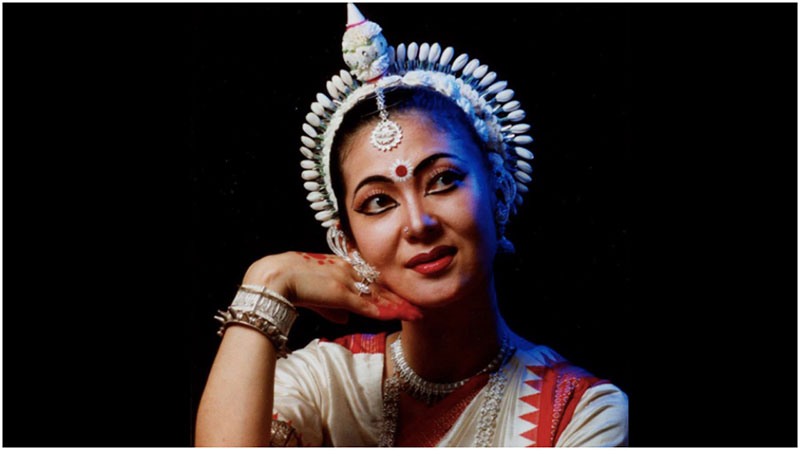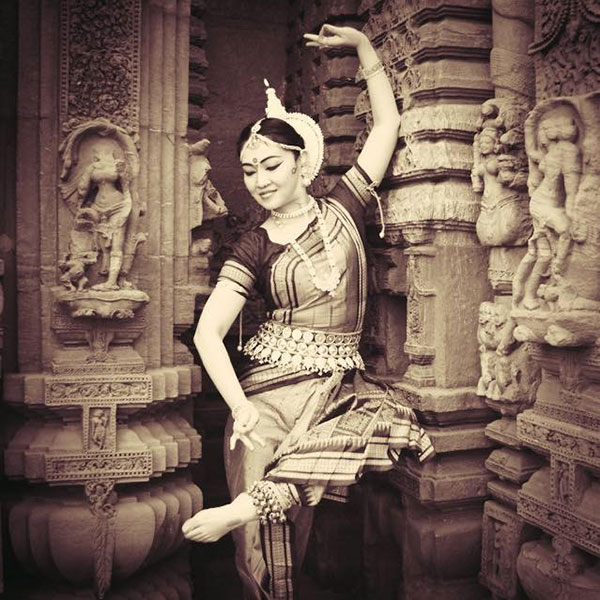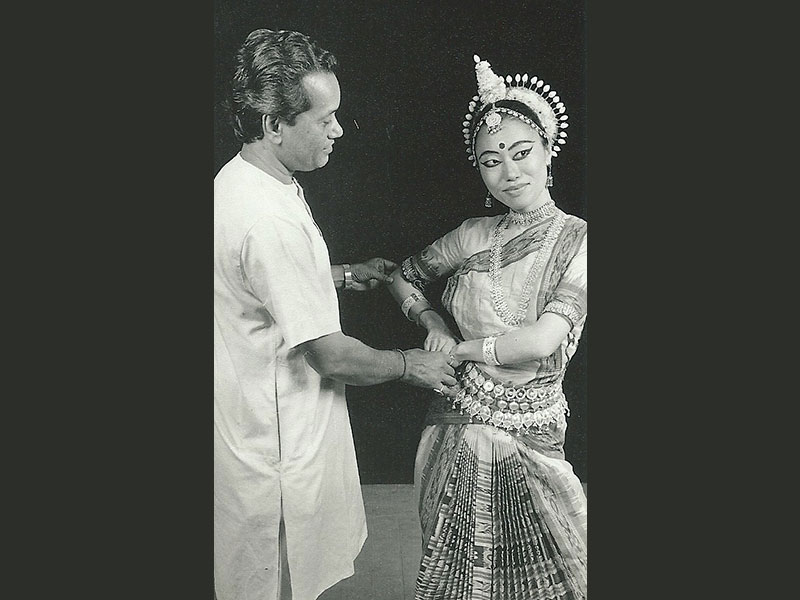Odissi, the Japanese connection
Amrita Singh/ Indiablooms
The beauteous Odissi dance has admirers and exponents not only in India but also beyond. In Japan, for example, there are disciples and schools to teach the art. Why does this classical dance from the shores of the Bay of Bengal attract dancers from far-off Japan? Amrita Singh from Kobe, meets three exponents to find out
Kimiko Yanagida
Kimiko Yanagida combines passion for art with academia. She trained under Guru Hare Krishna Behera for five years and Guru Subash Chandra Swain for almost three decades. As a student, she researched Dance Philosophy at National Nara Women’s University. She now teaches ‘Rhythmic Dance Expression’ at Osaka Health and Welfare Junior College. Learning Odissi in India is a precious experience for her and she actively promotes Indian culture in Japan.
Yanagida recounts three milestones that stand out in the journey of her dancing career:
“In school my teacher introduced me to a South African dance called ‘Pata Pata’. The dynamic rhythms of the accompanying songs in Xhosa language, the energy, and pathos too, touched me. I sensed for the first time how it must feel existing in a culture different from my own. It was only years later I realised the song was anti-apartheid. Reading about different countries whetted my interest in ‘physically encounter’ unknown cultures. This formed the integral bedrock that underpins my current dance activities.

The second influence was studying dance as an academic discipline. At the National Nara Women’s University, I learned that dance research is possible as an academic discipline. Dance research has given me a new perspective on dance.
After graduation, I started working for the Odisha government. While living there, I first encountered Odissi and was immediately charmed. Odissi is a sublime dance that encapsulates the spiritual culture of a people. Having learned classical ballet, I presumed I could master any dance move without difficulty, but in Odissi the rhythms of the upper and lower body are completely different.
Initially confused by a method I had never experienced before, I soon grew to appreciate the beauty of Odissi’s unique technique. Since it’s especially essential to place emotion into each movement, I enjoyed studying Hindu mythology and learning about the religious nuances that make the movements meaningful.” Yanagida’s mission is to introduce young Japanese students to the spirit of Odissi .
Sachiko Murakami
For Sachiko Murakami, dance has always been a form of creative release. Trained in ballet, she also studied jazz, modern dance and Balinese classical dance in her early twenties. “After training in Western style dances, I wanted to explore oriental forms of traditional dance. The more I searched, the more I realised that the roots of most Eastern classical dance lay in India.”
With this quest in mind, she attended an Odissi recital in Osaka. It was a transformative experience. “The grace and beauty of the dance and the sweet devotional undertone touched a chord in me.”
After completing her graduation in English Literature, Murakami began her training in Odissi in 1993 in Osaka with Saeko Hamada, a veteran Odissi dancer. Three years later, she moved to the USA to deepen her study with Dr Ratna Roy, a disciple of Adi Guru Pankaj Charan Das, doyen of the traditional Mahari style of Odissi.
Murakami grew to love the nuances of abhinaya, the interpretative aspect of Odissi where the dancer conveys emotion not boldly, but rather subtly through the slant of the head, a glance of the eye or a gesture. This made her realise she needed to pursue the art in the land of its origin. “It’s one thing to study Odissi, but another to be where the dance was initially crafted …you also begin to understand the emotional journey of the discipline.”

In 2000, Murakami travelled to Odisha where she trained at the Orissa Dance Academy with Guru Gangadhar Pradhan, Rojalin Mohapatra and Lingaraj Swain.
“In India, even the gods seem more human. There is expression and emotion everywhere I look at and that’s what I observed and soaked in. Just watching how people converse is fascinating, so I try to make it a point to travel to India at least once a year.”
In 2015, Murakami established The Odissi Dance Center, a collaborative institution from where she hopes to spread knowledge and awareness of Indian culture through Odissi.
“Odissi, for me, is an embodiment of creative spirituality. It not only helps me connect deeply with myself, it has given me a tool to live life skillfully and interact with the world in a meaningful way,” she says.
Miki Nonaka
Miki Nonaka is a reputed Odissi dancer in Japan and is instrumental in founding the India Arts Sangam in Kyoto in 2014. She has impacted a generation of Japanese dancers interested in Indian classical arts.
Nonaka graduated from Kyoto Saga University of Arts majoring in Nihonga painting. Her work as a textile designer at a dyeing studio required her to sit still for hours. Wanting to inculcate some exercise into her daily routine, she chanced upon Vasant Mala Indian Dance Institute where she learnt yoga and some basics of Bharatanatyam for eight years.
Her first brush with Odissi happened in 1988 when she saw Guru Kelucharan Mohapatra’s recital in Tokyo. “I loved his mesmerising performance and particularly loved the melodious accompanying music. Odissi music is nuanced and almost melancholic, somewhat similar to traditional Japanese music.”
In 1990, when Nonaka and her husband decided to live abroad for a while, they decided on India.
“I wrote to the Sangeet Natak Akademi enquiring about the possibility of joining some dance classes,” recalls Nonaka. “It proved to be a turning point for me because the person who replied to my initial query was Bandana Srinivasan, an administrative officer at the Akademi, who became a lifelong friend. She offered to arrange private lessons with an Odissi guru.”
In 1990, Nonaka started training with Guru Ramani Ranjan Jena at Triveni Kala Sangam, New Delhi. “Guruji was a dynamic dancer. Before my lessons started, I had thought that Odissi would be less demanding on the muscles than Bhartanatyam since movements in Odissi are circular and smooth but soon realised that it was just the opposite. The poetic delicacy of Odissi is layered with strength. The clean movements require grace and fluidity that comes with hard practice.”

Even after her return to Japan, Nonaka made regular trips to India to continue training with Guru Ramani Ranjan Jena until his demise in 2016.
While in India, Nonaka received glowing reviews for her performance at the Videshi Kalakar Utsav in 1991. “This was a very heartening experience for me. I had been learning Odissi for less than a year, but I was encouraged by Guruji and my peers to participate. I was the first Japanese artiste to perform at this annual event.”
The show was organised by Sharon Lowen, an established Odissi dancer with the aim of erasing divisive beliefs that non-Indian practitioners of Indian classical arts could not be artistes in their own right.
“Although I didn’t realise it then, this line of thought is something I’ve dealt with repeatedly, not only in India but even in Japan. But now I’ve come to a point where all I want is to spread the message of my Guruji. I can still hear his words, as I heard them for the first time and I wish to teach his method and style to my students.”